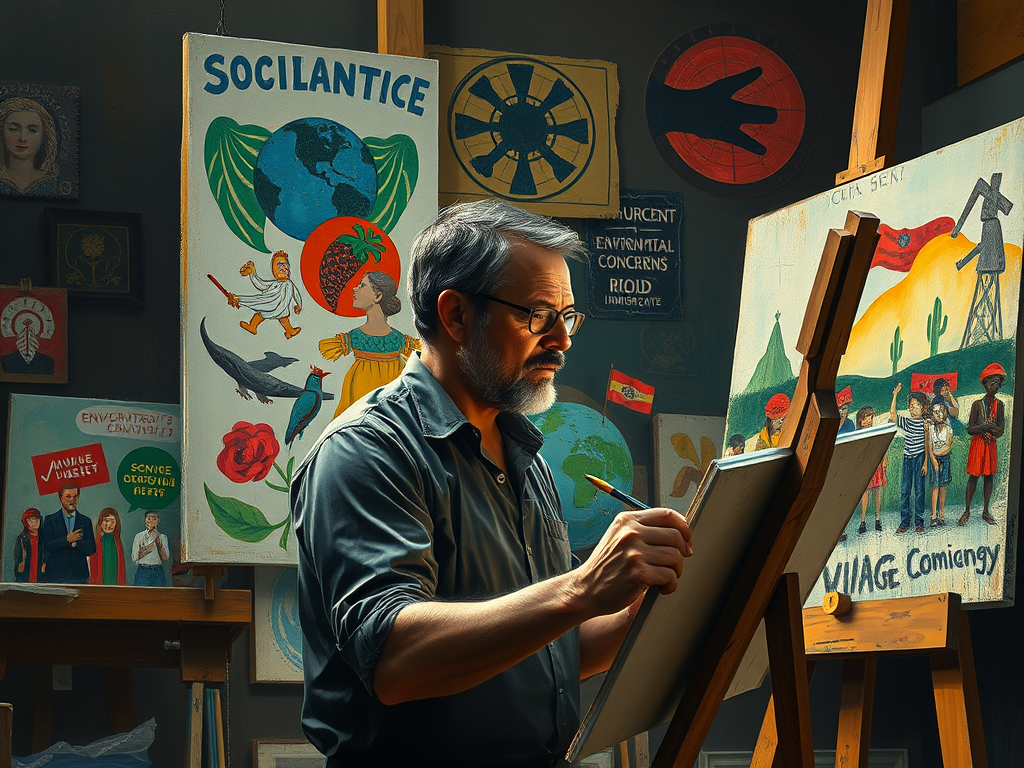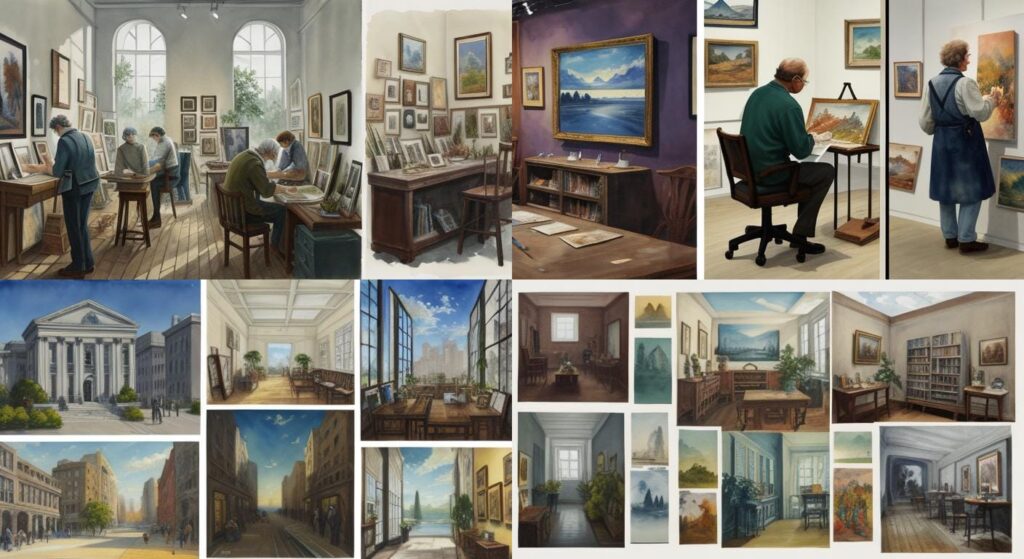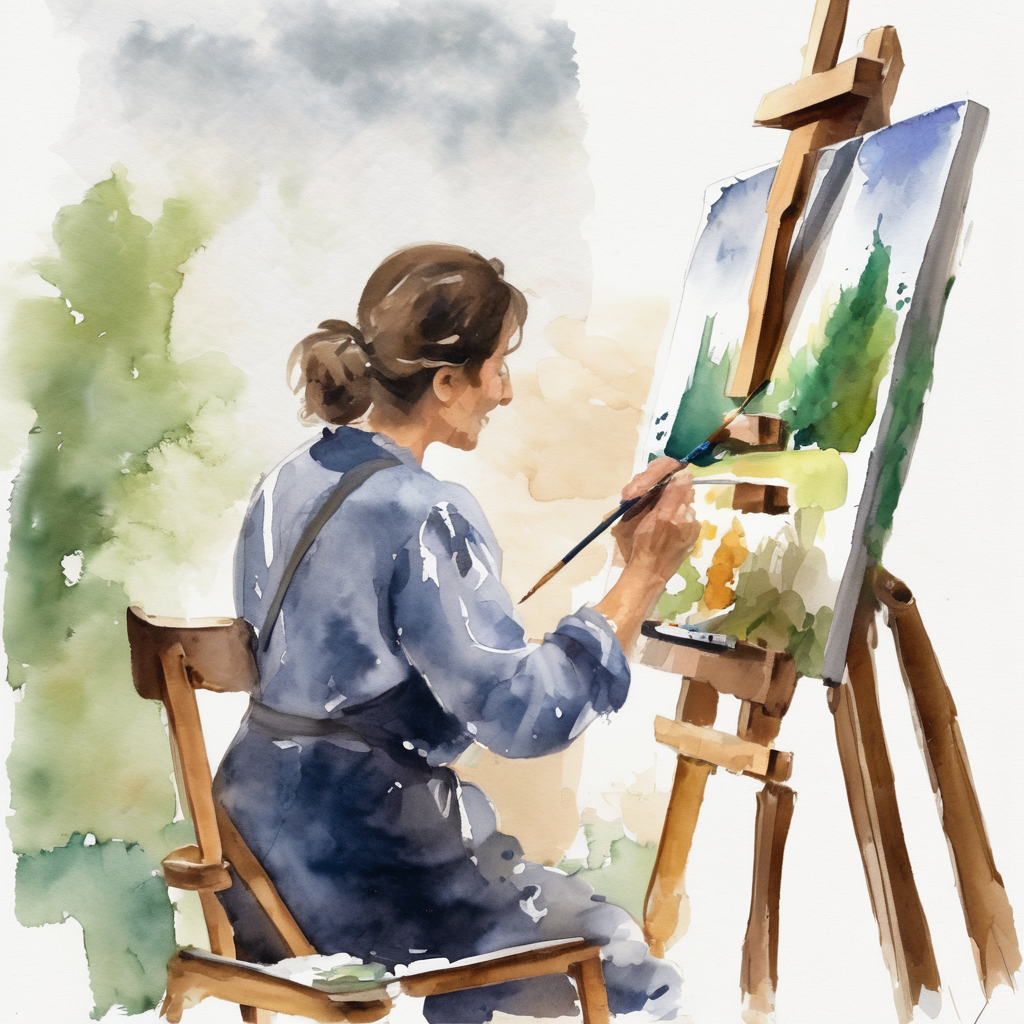Painters have long harnessed the power of “art for change,” using their creations to mirror the world and ignite transformation. From capturing the raw realities of wars and revolutions to boldly challenging cultural norms, their work has been a catalyst for justice and equality movements throughout history.
This enduring power of art connects past struggles to present-day issues, highlighting its importance in driving societal progress. Artists create powerful images that challenge unfairness, inspire action, and open people’s eyes to important issues. This guide explores the topics painters focus on, how they make their art, and the changes they aim to bring to society.
Key Points Summary
- Art for Change: Painters reflect societal issues to inspire transformation.
- Historical Impact: Art influences justice and equality movements.
- Topics Explored: Racism, environment, politics, mental health, immigration.
- Techniques Used: Symbolism, realism, abstract art, street art.
- Impact: Raises awareness, starts conversations, inspires action.
1. Topics Painters Explore
Fighting for Social Justice

Painters often tackle issues like racism, gender equality, and LGBTQ+ rights. Kara Walker creates haunting images about the history of racism, while Banksy’s street art speaks out against unfair treatment in society.
Protecting the Environment
Climate change and environmental destruction are common themes. For instance, Olafur Eliasson’s “The Weather Project” uses light and mirrors to simulate a sunlit atmosphere, encouraging viewers to think about their connection to the environment. Similarly, Alexis Rockman’s “Manifest Destiny” depicts a flooded Brooklyn, sparking conversations about the potential impacts of climate change on urban areas.

Political Criticism Through Art
Political corruption, war, and unfair government actions are popular subjects for painters. Picasso’s “Guernica” protests the horrors of war, while Ai Weiwei uses his art to speak out against censorship and human rights violations.
Mental Health Awareness
Artists like Yayoi Kusama and Edvard Munch share their struggles with mental health through their art. Their work helps people understand these issues better and reduces stigma.
Stories of Immigrants and Refugees
The challenges faced by displaced people are shown in art by Ai Weiwei and Tania Bruguera. Their paintings bring attention to the struggles of immigrants and encourage others to help.
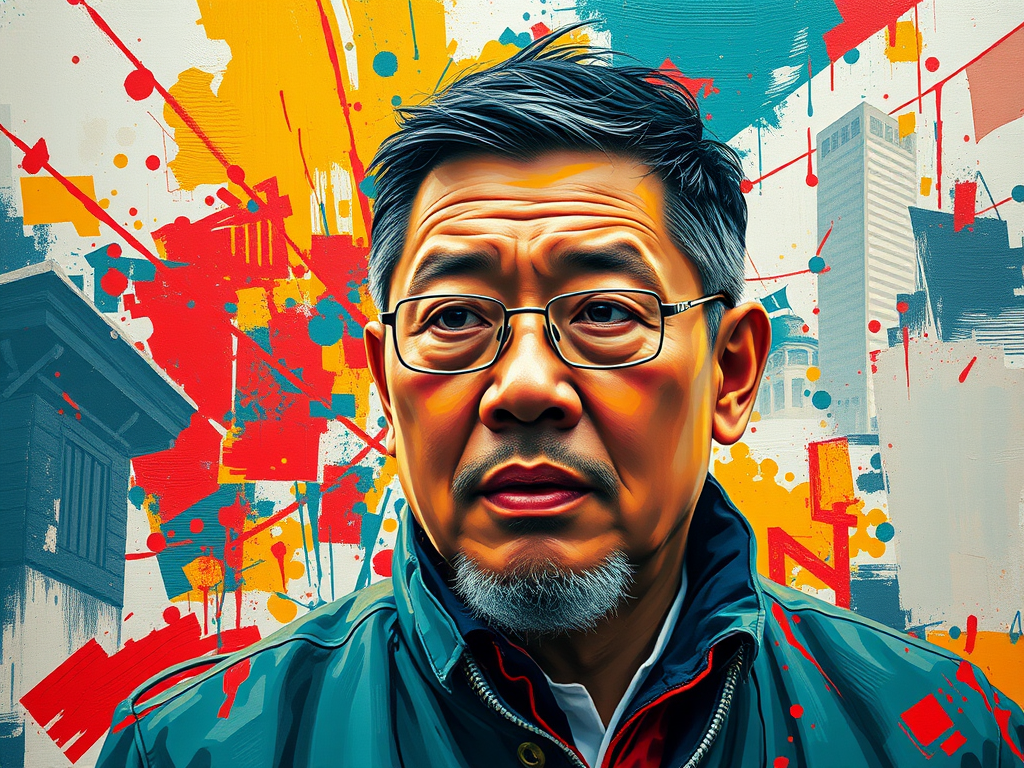
Highlighting Economic Inequality
Diego Rivera’s murals show the hard lives of workers and the unfair gap between rich and poor. His work makes viewers think about how society can become more equal.
2. Techniques Painters Use
Symbolism and Hidden Messages
Painters like Frida Kahlo use symbols to tell deeper stories. Her art explores identity, history, and post-colonial struggles through meaningful imagery.
Realistic and Hyperrealistic Styles
Some artists paint in a way that looks almost like a photograph. This style helps make social issues feel immediate and real, as viewers can see details that evoke strong emotions. For example, Philip Guston’s paintings often use stark, confrontational imagery to highlight societal flaws, forcing audiences to confront uncomfortable truths. Similarly, Jenny Saville’s hyperrealistic works challenge norms and provoke thought by portraying human vulnerability and resilience. By creating such lifelike art, these painters deepen viewers’ understanding and connection to the social issues depicted.
Abstract and Thoughtful Art
Abstract painters like Mark Rothko and Anselm Kiefer use shapes and colors to express emotions. This style helps people connect with social issues on a deeper level.

Street Art for Everyone
Artists like Banksy and Shepard Fairey create art on public walls where anyone can see it. Their bold and colorful messages grab attention and make people think about important topics.
3. The Impact of Socially Engaged Art
Bringing Awareness to Big Issues
Painters help educate people about problems like inequality, pollution, and injustice. Their art makes these issues hard to ignore.
Starting Important Conversations
Art can challenge what people think and start discussions. For example, Picasso’s “Guernica” sparked widespread debate about the horrors of war, and Banksy’s street art often initiates conversations about societal inequality and consumerism. These artworks encourage viewers to question the status quo and engage with social issues more deeply.
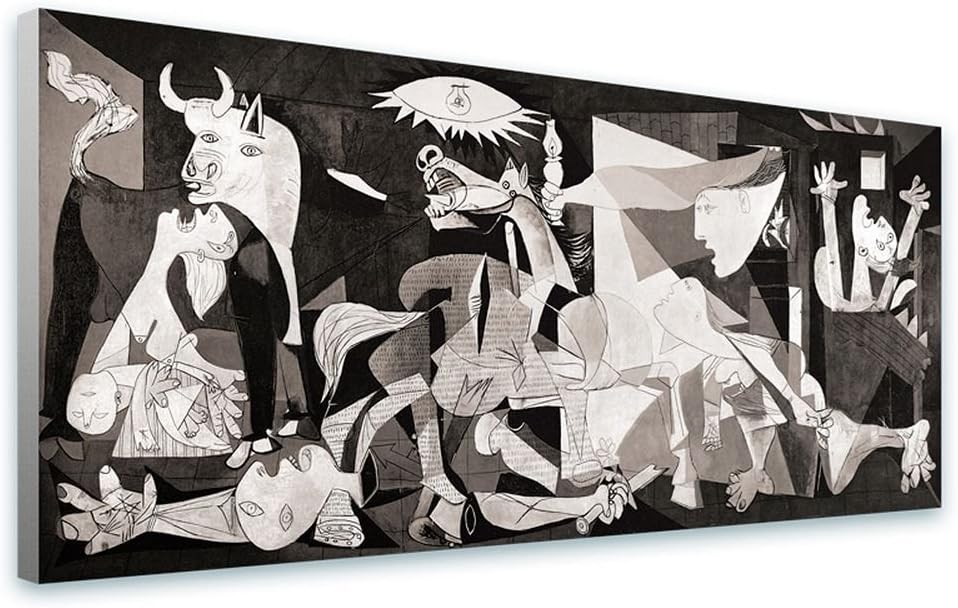
Inspiring Action
By showing problems in a personal and emotional way, painters encourage others to take steps to make a difference – like volunteering or supporting activism.
Building Empathy
Art shows the human side of social issues. By connecting with viewers emotionally, painters help build understanding and solidarity.
Documenting History
Art serves as a record of important events and movements. Paintings keep these stories alive for future generations.
4. Famous Artists Who Inspire Change
Kara Walker
Walker’s black-and-white silhouettes explore America’s history of slavery and racism, leaving a lasting impression on viewers.
Banksy
The mysterious street artist uses clever and humorous images to comment on war, politics, and consumerism.
Ai Weiwei
Ai Weiwei’s art speaks out against injustice, especially on issues like freedom of speech and the refugee crisis.
Frida Kahlo
Kahlo’s self-portraits explore her personal struggles and bigger issues like gender and cultural identity in Mexico.
Diego Rivera
Rivera’s large murals tell stories about workers, indigenous people, and the negative effects of capitalism.
5. How to Study Art About Social Issues
Talking to Artists
Interviews and surveys with painters can reveal why they create their work and what impact they hope to have.
Looking Closely at Paintings
Analyzing the colors, symbols, and themes in a painting helps uncover its deeper meaning.
Learning About History
Understanding the time period when a painting was made can provide context for its message.
Visiting Art Exhibits
Seeing socially conscious art in galleries or museums helps you notice trends and discover new artists.
Reading Books and Articles
Researching art movements and activist painters provides valuable insights into their work and its influence.
6. Why Socially Conscious Art Matters
Artists who focus on social issues help make the world a better place. They educate the public about pressing problems like inequality, environmental harm, and injustice. By using techniques such as symbolism, realism, and street art, painters connect with people on an emotional level. Their work starts important conversations, inspires action, and builds empathy by showing the human side of social struggles. Additionally, socially conscious art serves as a historical record of pivotal events and movements. Supporting these artists ensures their impactful messages continue to inspire change and foster a sense of collective responsibility.

